Table of contents
What is Buddhist meditation?

Buddhist meditation is the meditation used in Buddhist practice. It includes any method of meditation that has, as its ultimate goal, enlightenment. Here we will explain a little more about this practice and how to perform it.
Elements of Buddhist meditation
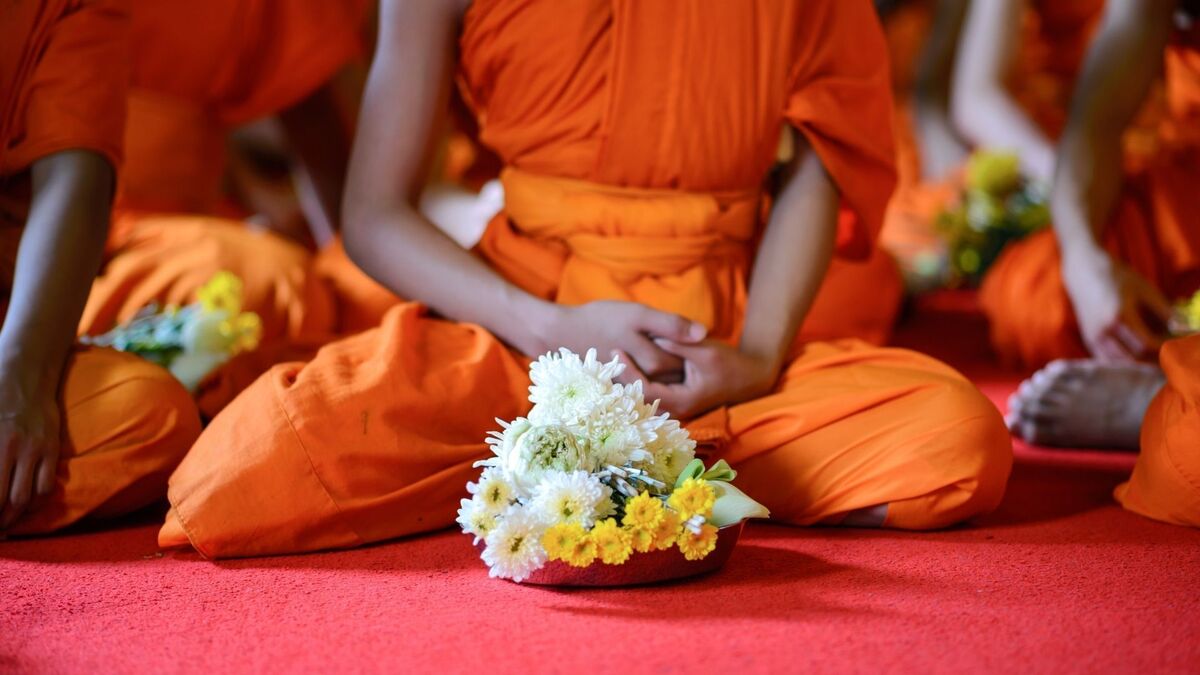
When meditating, there are several elements that influence the practice and that need to be observed, so that the practitioner can develop in the best way when meditating. The following are some tips on these elements.
Do not judge
A very important element when we practice meditation is to maintain a non-judgmental attitude, which is very difficult, especially at the beginning of our practice.
Usually our judgments follow a process in which we categorize something as good, bad or neutral. Good because we feel good, bad because we feel bad and neutral because we do not associate a feeling or emotion of pleasure or displeasure with the event or the person or the situation. So we seek what is pleasurable and avoid what does not bring us pleasure.
So when practicing meditation and judgmental thoughts arise in the present experience, let us simply observe the experience of the thoughts without extra dialogue, without adding other thoughts or more judgmental words. Let us just observe what is going on, noticing the judgmental thoughts and returning our attention to the breath.
Being patient
Meditation involves training your mind to focus and redirect your thoughts away from daily hassles and some frustrations. So with constant practice of meditation a person can become more patient with the adversities of everyday life.
Beginner's mind
Beginner's mind is the ability that we can rescue to always see things as if it is the first time. Having a beginner's mind will help you to not feel bored and bored with activities that you are already used to doing.
Beginner's mindset is knowing that the way you see the world and see the events that happen in life are not the only way to see things. At the very least, we will have two ways of looking at the same situation.
Trust in your essence
The practice of trusting goes beyond trusting a person, a relationship, or something, it includes trusting all of these, but it goes beyond. Trusting means trusting the process, trusting that things are as they should be and nothing more. Trusting nature, our bodies, relationships, trusting the whole.
To talk is easy, to put into practice is a challenge. An important point of attention here is to know that trust does not mean, once again, to resign, it does not mean to do nothing. Trust is also an active process, to trust is to accept the present moment and to believe that the process is the process that is, that can be and that could be.
Effortless
The practice of no effort within meditation practice is the work of practicing without wanting to get anywhere specific. You practice to be aware of the here and now, you don't practice to achieve a specific mental state or to get somewhere.
Non-effort is leaving our to-do list to be present in whatever is here and now. It is allowing the world to be as it is moment by moment, which is extremely.
This point is a real habit breaker in our western culture. We live in the culture of doing, doing and doing more. Breaking the habit and bringing in the non-effort is creating space of care and kindness for ourselves. It is creating space for a more conscious and healthier and, why not, more efficient doing.
Acceptance
Acceptance is an active process, we waste a lot of energy denying and resisting what is already a fact, causing more tension and preventing positive changes from occurring. Acceptance brings savings of energy that can be used to heal and grow, this attitude is an act of self-compassion and intelligence!
Acceptance is always correlated to the present moment, that is, I accept what is present and I can work for it to change from the future, without the attachment or goal that if it doesn't change, I will continue resisting and suffering. If you accept, you can yes act to be different, accepting if it remains the same.
Origin of Buddhist meditation

Like most world religions and philosophies, Buddhism, according to its historical evolution, has been divided into several groups and segments that differ in some doctrines and visions of Buddhism. We will not be able to distinguish here all the branches of Buddhism that exist or have existed, but we will analyze those of greater historical relevance.
Siddhartha Gautama
Siddhartha Gautama popularly known as Buddha was the prince of a region south of present-day Nepal, who renounced the throne to dedicate himself to the quest to eradicate the causes of human suffering and all beings, and in this way found a path to "awakening" or "enlightenment".
In most Buddhist traditions, he is regarded as the "Supreme Buddha" and in our era, Buddha meaning "the awakened one." The time of his birth and that of his death are uncertain, but most scholars agree that his birth was around 563 BCE and his death in 483 BCE.
Theravada
Theravada in free translation "Teaching of the Sages" or "Doctrine of the Elders", is the oldest Buddhist school. It was founded in India, is the school that most closely approximates the beginning of Buddhism and for many centuries was the predominant religion in most of the continental countries of Southeast Asia.
In the discourses of the Pali Canon (compilation of traditional Buddhist teachings), the Buddha frequently instructs his disciples to practice samadhi (concentration) in order to establish and develop jhana (total concentration). Jhana is the instrument used by the Buddha himself to penetrate the true nature of phenomena (through enquiry and direct experience) and toto achieve enlightenment.
Right Concentration is one of the elements of the Noble Eightfold Path , which in the Buddha's teachings is a set of eight practices that correspond to the fourth noble truth of Buddhism. It is also known as the "middle way". Samadhi can be developed from attention to the breath, from visual objects and from the repetition of phrases.
The traditional list contains 40 meditation objects to be used for Samatha meditation. Each object has a specific purpose, such as meditation on body parts will result in a decrease in attachment to our own and others' bodies, resulting in a reduction of sensual desires.
Mahayana
Mahayana or Way for many is a classificatory term used in Buddhism that can be used in three different ways:
As a living tradition, Mahayana is the larger of the two main traditions of Buddhism existing today, the other being Theravada.
As a branch of Buddhist philosophy, the Mahayana refers to a level of spiritual practice and motivation, specifically the Bodhisattvayana. The philosophical alternative is the Hinaiana, which is the yana (meaning path) of Arhat.
As a practical path, Mahayana is one of the three yanas, or paths to enlightenment, the other two being theravada and vajrayana.
Mahayana is a vast religious and philosophical structure. It constitutes an inclusive faith characterized by the adoption of new sutras, the so-called Mahayana sutras, in addition to more traditional texts such as the Pali Canon and the agamas, and by a change in the basic concepts and purpose of Buddhism.
In addition, most schools of Mahayana believe in a pantheon of bodhisattvas, quasi-divines, who are devoted to personal excellence, supreme knowledge, and the salvation of humanity and all other sentient beings (animals, ghosts, demigods, etc.).
Zen Buddhism is a school of Mahayana that often removes the emphasis on the pantheon of bodhisattvas and instead focuses on the meditative aspects of the religion. In Mahayana, the Buddha is seen as the ultimate, highest being, present in all times, in all beings, and in all places, while the bodhisattvas represent the universal ideal of altruistic excellence.
Dharma
Dharma, or dharma, is a Sanskrit word meaning that which holds high, it is also understood as the life mission, what the person has come to do in the world. The root dhr in the ancient Sanskrit language means support, but the word finds more complex and deeper meanings when applied to Buddhist philosophy and Yoga practice.
There is no exact correspondence or translation of dharma into Western languages. Buddhist Dharma refers to the teachings of Gautama Buddha, and is a kind of guide for a person to reach the truth and understanding of life. It can also be called "natural law" or "cosmic law".
The eastern sages preach that the easiest way for a person to connect with the universe and cosmic energy is to follow the laws of nature itself, and not go against them. Respect its movements and flow as the natural law indicates. This is part of living the dharma.
Gautama Buddha referred to the path he prescribed for his students as dhamma-vinaya which means this path of discipline. The dos path is a path of self-imposed discipline. This discipline involves abstaining as much as possible from sexual activity, a code of ethical behavior, and striving to cultivate mindfulness and wisdom.
Sangha
"Sangha" or "Sangha" in Sanskrit means "harmonious community" and represents the community formed by the faithful disciples of the Buddha. These live in the bosom of the larger society, in harmony and brotherhood, respecting life, in all its manifestations, always assiduous in listening to the Dharma and always ready to transmit their faith to others.
In the Sangha we can share joys and difficulties. Give and receive support from the community, helping each other towards enlightenment and freedom. It is the legitimate fraternal society formed by those who walk the Path of Wisdom and Compassion taught by the Awakened Buddha. By taking refuge in the Sangha, we join the stream of life, flowing and becoming one with all our brothersand sisters in practice.
State of Nirvana
"Nirvana is a state of peace and tranquility achieved through wisdom," says nun Coen Murayama, of the Zen-Buddhist Community of São Paulo. Nirvana is a word from the context of Buddhism, which means the state of liberation attained by human beings on their spiritual quest.
The term originates from Sanskrit, and can be translated as "extinction" in the sense of "cessation of suffering". One of the fundamental themes of Buddhist doctrine, in a broader sense, nirvana indicates an eternal state of grace. It is also seen by some as a way of overcoming karma.
Benefits of Buddhist meditation
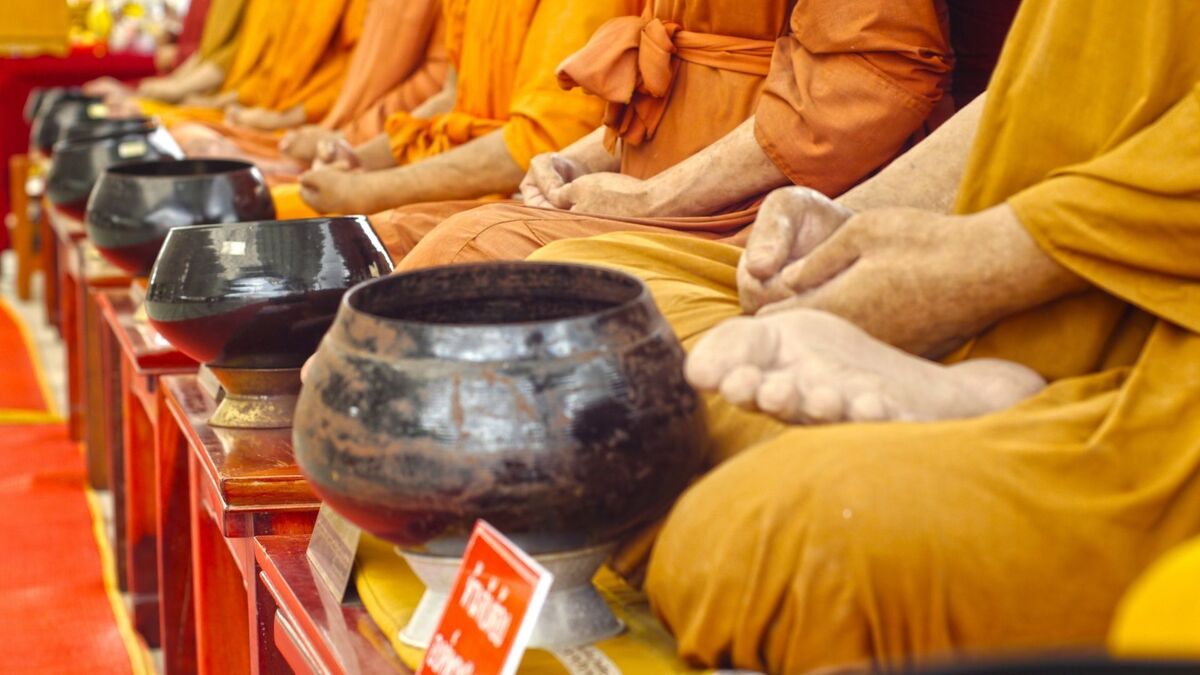
A few minutes of daily practice are enough for you to feel the benefits of meditation. This ancient oriental technique, based on breathing and concentration, won the world for its positive effects on the health of the body and mind and the process of self-knowledge. Below are some benefits that the practice brings to everyday life according to scientific studies.
Self-knowledge
Meditation helps the human being to connect with their self. It is the time to focus on the present, not allowing bad thoughts to take over your mind. Meditation is also a method that helps in this journey of knowing yourself.
Meditation is a great method for self-knowledge and is able to provide the individual with a deep journey to their own self. It is as if you look inside, to your soul and emotions, and can see what is there. It helps to gain more awareness, to understand your body and thoughts. Meditation helps to maintain balance between body and mind.
Stress reduction
Stress and anxiety are natural reactions of our body when we face difficult or challenging situations. However, when these feelings are intense and persistent, they can cause several physical and mental health problems.
Meditation has been proven to help reduce levels of adrenaline and cortisol - hormones related to anxiety and stress disorders - and to increase production of endorphin, dopamine and serotonin - neurotransmitters linked to feelings of well-being and happiness.
Self-control
Self-control is the ability to be aware of our emotions, especially the strong ones, and be able to control them. Being angry about something and not exploding is an example of what we can consider self-control.
The capacity for self-control may also be associated with the fact that we try to maintain focus while performing a task that must be accomplished without distractions, for example.
Before you lose your self-control, try to breathe, think about it, question it and face your internal responses. Trying to understand the reasons that lead you to lose control is an important exercise. And it should be done often.
By working on these feelings it is possible to notice noticeable changes in the way you handle problematic situations. According to Elisa Harumi Kozasa, neuroscientist at the Albert Einstein Israelite Hospital's Brain Institute, meditation literally modifies brain areas. "The cortex becomes thicker in parts related to attention, decision-making and impulse control."
But we're not talking about suppressing emotions, but about your self-control. In other words, the idea here is not to teach you to swallow frogs or to forge positive thinking when it doesn't exist. Suppressing anger or stress is self-delusion, not self-control, so you need to understand what causes your anger impulses and outbursts rather than rejecting it.
Development of reasoning
Studying a meditation technique known as mindfulness meditation, scientists found that participants in the meditation training showed significant improvement in their critical cognitive skills after just 4 days of training in daily 20-minute sessions.
The research conducted at Wake Forest University School of Medicine in the United States suggests that the mind can be trained in the cognitive aspect more easily than most people assume. "In the behavioral test results, we are seeing something that is comparable to the results that have been documented after much longer training," said Fadel Zeidan,research coordinator.
Helps with depression
A study done at Johns Hopkins University in the United States shows that meditating for 30 minutes every day helps relieve symptoms of anxiety, depression and chronic pain. Scientists and neurologists have been studying meditation,
Since the practice has the power to modify some areas of brain action, controlling the activity in the prefrontal cortex region, responsible for conscious thought, articulation, creativity and strategic vision.
Quality of sleep
Those who have trouble sleeping can also benefit from the practice of meditation. The breathing and concentration techniques help the body and mind to relax completely, pushing away the excess thoughts and worries of routine.
Meditation has been widely used as an alternative treatment in cases of insomnia, helping to reduce or eliminate the use of medications, which can be addictive or have adverse side effects.
Physical health
Sitting for several hours a day alters our posture and causes back pain, especially in the lower back. These complaints can hinder your studies and your work. In this sense, a study revealed that meditation can help control short and long-term pain due to the fact that it raises your body and postural awareness required during the practice.
However, meditation can help, but does not solve the problem completely. Therefore, any discomfort beyond the normal seek guidance from a trained professional.
Helps focus
Without a doubt, practicing meditation daily will increase your power of concentration, according to some studies. Researcher from the Brain Institute, Elisa Kozasa, is a reference in studies on the effect of meditation in the field of neuroimaging and reveals the increase of the capacity of focus to practitioners of the technique.
In addition, these individuals are more apt to give quick answers because they are more concentrated on the activity performed at the moment. That is, the focus on the present.
Buddhist meditation methods
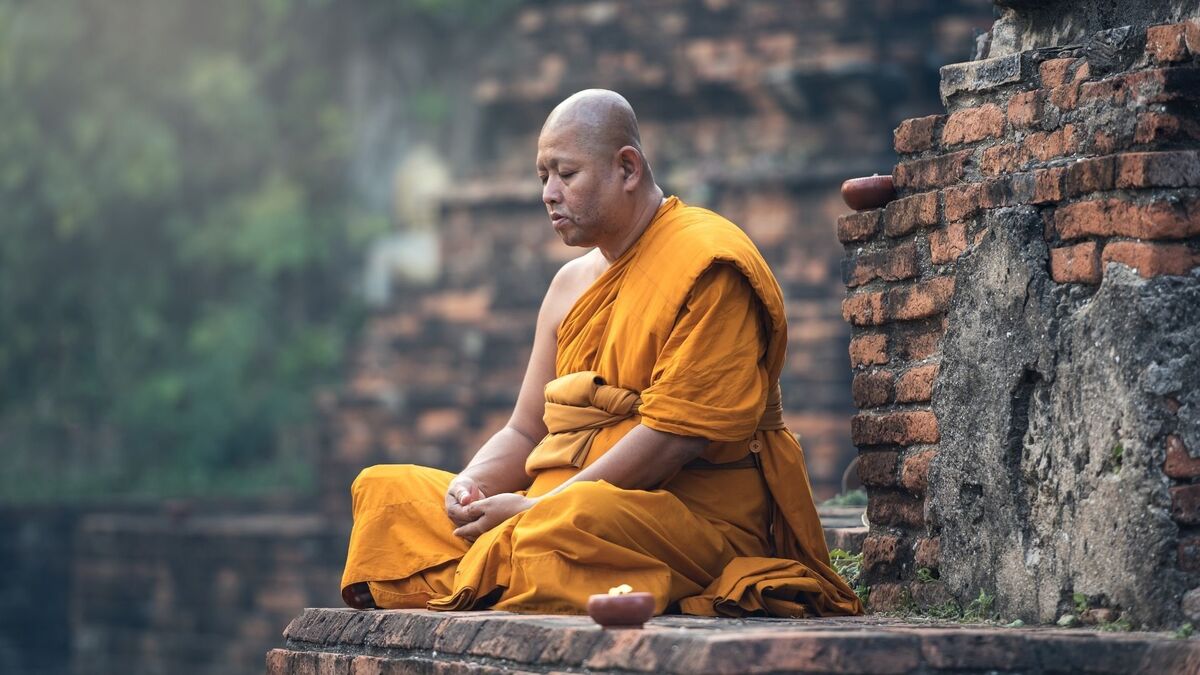
From the early divisions that occurred among the early schools of Buddhism and as Buddhism spread to different countries, different traditions emerged. Along with these traditions, different ways of teaching meditation appeared.
Some techniques have disappeared in some places, some have been adapted and some have been added from other traditions or even created. But what unites the different approaches to meditation as Buddhists is that they are in line with the noble Eightfold Path.
Vipassana
Vipassana, which means seeing things as they really are, is one of India's oldest meditation techniques. Vipassana duality is commonly used to discern two aspects of Buddhist meditation, respectively concentration/tranquility and inquiry.
Vipassana can be developed in many ways, through contemplation, introspection, observation of sensations, analytical observation, and others, always with insight as the goal. Practices may vary among schools and teachers, one common variation being the degree of concentration required, which may range from bare attention to the practice of Jhanas.
Smatha
Although smatha (meditation with focus) can be associated with the millennial Buddhist tradition and anyone can benefit from this meditation. The smatha technique focuses on the 5 elements (air, fire, water, earth and space). According to Tibetan Buddhist tradition this practice balances the energies that form all things.
Thus smatha is a term used within Buddhist meditation to designate the aspect of training that leads to calm and concentration. Within the Teravada tradition many adopt the duality Vipassana/Samatha for teaching this meditation practice.
How to practice Buddhist meditation
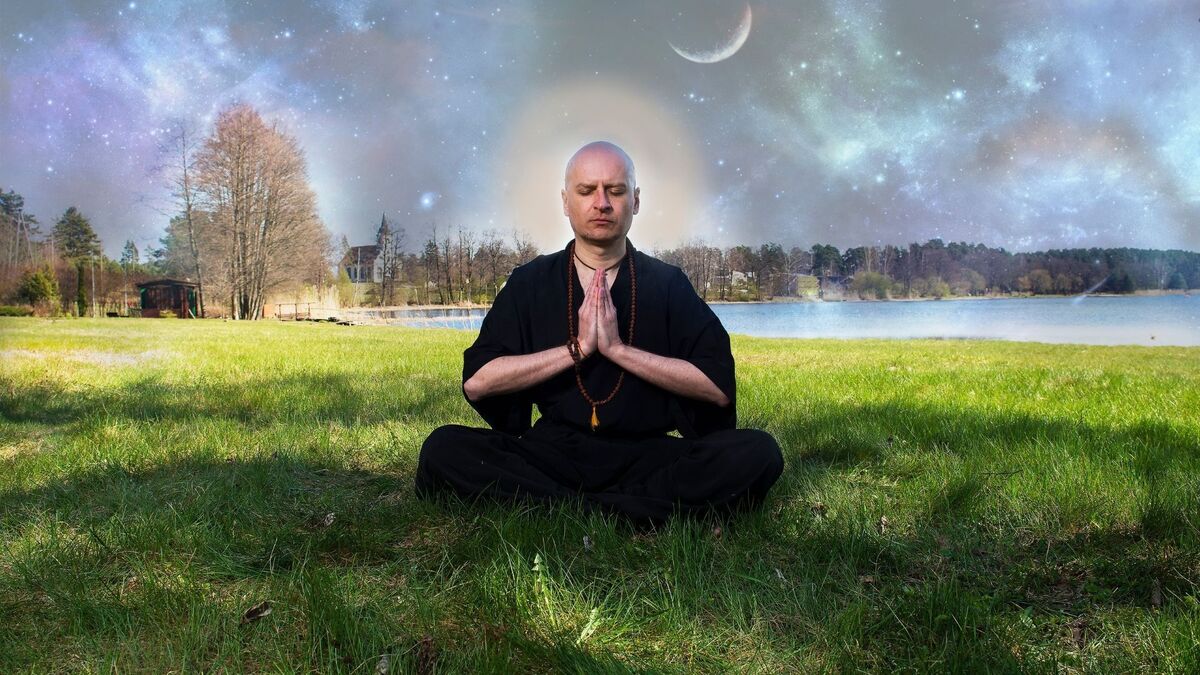
Buddhist guided meditation has much of its richness inserted in people's daily lives, serving as a foundation for a journey of self-knowledge, awakening of the mind and complete relaxation of the body.
In Buddhism, meditation is one of the most widespread methods on the path to enlightenment and the way to do it depends on the school you are in. Here we will point out some aspects that can help you start the practice.
Peaceful environment
It is very important that your practice occurs in a comfortable place and that keeps you away from distractions. If you are one of those who like to make the environment "themed", you can bring some items and objects that further ensure your comfort during meditation and enhance your experience.
Appropriate seating
Use a comfortable cushion or mattress that does not slip or sag easily when sitting on a lotus or half-lotus. A good cushion is wide enough to support legs and knees and is about four fingers thick.
If this position is not comfortable, resort to a stool suitable for meditation, or the edge of a chair or hard bed. The position is very important in meditation. The body and habits of people are so different that it is impossible to define only one or two rules for sitting. Thus comfort and upright spine without support are the key elements of good posture for meditation.
Comfortable clothes
In order to practice meditation it is important to wear suitable clothing. Tight clothes, belts, watches, glasses, jewelry or any clothing that restricts circulation should be loosened or removed before meditation. So without these types of clothing and accessories, it is easier to meditate.
Upright spine
The spine is the main nerve center of the body, where the energies of the extremities come together, and therefore it is important that it remain upright during meditation. Those with a weak back or who are not used to sitting unsupported may need some time to get used to it. For most people, there will be no major difficulties in sitting correctly without much practice.
Immobility
When meditating it is important that the body remains in a state of attention, but relaxed and immobile. Immobility is important so that, during the practice, attention is directed only and exclusively to the focus of practice, thus obtaining more benefits in this process. If the body does not remain immobile it hinders the concentration and development of meditation.
Eyes half-open
As a rule, it is best for beginners in meditation to leave their eyes slightly open and fix their gaze on an imaginary point in front of them at a distance of no more than one meter. This will prevent drowsiness. These are the seven basic postures for meditation practice. Below I will give eight other details that also prove important for the comfort and effectiveness of the meditation posture.
The practice
Just as important as the process of preparing for meditation is the process of getting out of it. If we simply jump out of our seat and start doing everything in a hurry, without a proper transition, we can lose all that was gained during meditation and even become ill.
When we enter meditation, we move away from that which is coarse and aggressive and towards that which is refined and gentle. When we finish the practice, we make the opposite movement - the calm and tranquil world of the luminous inner mind needs to gradually make room for the needs of physical movement, speech and the thoughts that accompany us throughout the day.
If we get up abruptly after meditation and throw ourselves back into the rhythm of the world, we may experience a headache, develop joint stiffness, or some other physical problem. Careless transitions from meditation to ordinary awareness can also lead to emotional stress or irritability.
How can Buddhist meditation help?
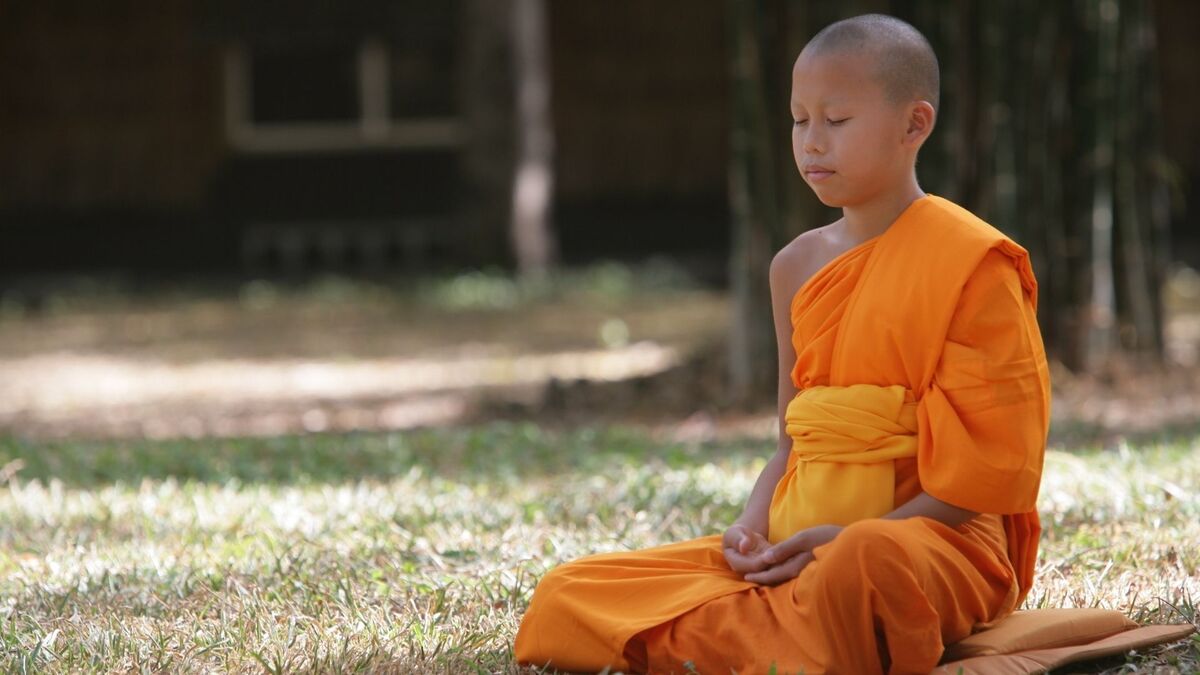
Meditation is not something done only by Buddhist monks. Today, the practice is seen as an important tool for the brain, scientifically proven and adopted by many companies as a way to stimulate the focus and creativity of employees.
This ancient technique works on breathing, concentration and creates perfect conditions for the body to relax and the mind forget the daily problems. Practicing a few minutes of meditation daily, has numerous benefits for health, mental, physical and emotional, so it is important to have a constant practice and improve in meditation.

